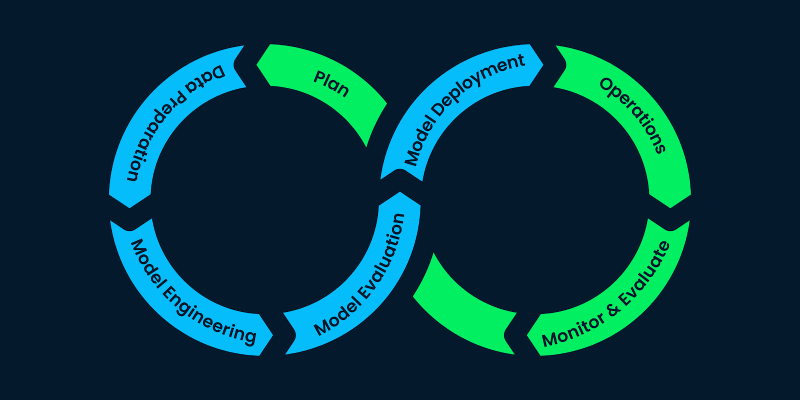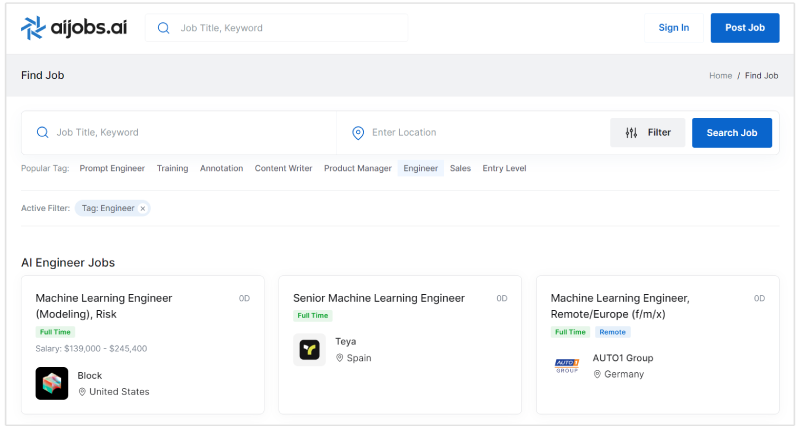Machine Learning Engineer vs Data Scientist: Career Path, Skills, and Salary Compared

Navigating the world of data-focused careers can be overwhelming, with titles like Machine Learning Engineer and Data Scientist sometimes used interchangeably.
However, while these roles share common ground, they play distinctly different parts in a modern data team.
This blog unpacks the key differences between these two career paths, helping you decide which role aligns best with your career goals and ambitions.
What is a Machine Learning Engineer?
A Machine Learning Engineer (MLE) focuses on building scalable and production-ready machine learning systems.
They bridge the gap between data science and software engineering, ensuring that models developed by data scientists can run efficiently in real-world environments.
Core Responsibilities of an MLE
- Model Deployment: Implementing machine learning (ML) algorithms into live systems.
- Model Optimization: Enhancing model performance for speed and accuracy.
- Infrastructure Building: Establishing pipelines for data processing, training, and deployment.
- Monitoring Models: Ensuring algorithms perform well post-deployment through monitoring tools.

Technologies Used by ML Engineers
- Frameworks: TensorFlow, PyTorch, JAX.
- DevOps Tools: Docker, Kubernetes, MLOps platforms like MLflow.
- Programming Languages: Python, C++, Java.
Example Project
An MLE might create a real-time recommendation engine for an e-Commerce platform, taking a trained ML model and integrating it into production to serve personalized recommendations instantly.
What is a Data Scientist?
A Data Scientist is the detective of the data world, focused on analyzing and interpreting data to inform strategic decisions.
They often experiment with data to uncover insights and build predictive models.
Core Responsibilities of a Data Scientist
- Data Exploration: Cleaning, preparing, and analyzing datasets.
- Model Development: Creating machine learning models tailored to specific business problems.
- Insight Communication: Presenting findings through reports and visualizations to stakeholders.
Technologies Used by Data Scientists
- Languages: Python, R, SQL.
- Visualization Tools: Tableau, Matplotlib, Seaborn.
- Frameworks: Scikit-learn, XGBoost, Jupyter Notebooks.
Example Project
A data scientist might analyze customer churn rates, build predictive models to identify patterns, and recommend actionable strategies for retention.
Looking for a new job in either Machine Learning Engineering or Data Science?
Check out all of the open jobs from some of the leading tech companies on AI Jobs.

Key Differences between Machine Learning Engineer and Data Scientist
1. Focus Area
MLEs focus more on implementing, scaling, and maintaining models in production systems.
Data scientists, on the other hand, concentrate on exploring datasets and experimenting to build insights-driven solutions.
2. Skill Set
MLEs emphasize software engineering with expertise in scalability, API development, and MLOps.
While data scientists excel in statistical analysis, data visualization, and storytelling.
3. Programming Languages and Tools
MLEs often use engineering-heavy tools like TensorFlow and Docker. On the other hand, data scientists frequently explore data with Jupyter Notebooks and statistical libraries like Pandas.
4. Workflow and Collaboration
MLEs work closely with engineers to finalize deployment pipelines and ensure models are optimized for production.
Data scientists collaborate with marketing, finance, and product teams for data-driven decisions.
5. End Goals
The primary goal of an MLE is creating reliable, production-ready systems.
A data scientist aims to deliver actionable insights that enhance business decisions.
Career Path and Education Requirements
Both roles share overlapping foundations but have differentiated paths.
Education
Most MLEs hold degrees in computer science, software engineering, or mathematics, some with certifications in MLOps or cloud platforms (e.g., AWS Certified Machine Learning).
Data scientists often come from backgrounds in data analytics, statistics, or applied math, with many holding advanced degrees like a Master’s or Ph.D.
Skills Transition
If you're a data scientist aiming to transition to MLE, focus on software engineering, DevOps, and cloud tools. Similarly, an MLE branching into data science should deepen statistical and analytical knowledge.
Salary Comparison
On average, data scientists and machine learning engineers earn highly competitive salaries in tech.
USA
India
Factors like experience, location, and company size can influence compensation significantly.
For instance, tech hubs like San Francisco offer higher pay than “non-tech” cities like Denver, Boston, etc.

Which Role is Right for You?
Ask yourself the following questions to determine which role is the best fit for you:
Do you love coding and building?
If yes, machine learning engineering may be a better fit. The role involves coding-intensive tasks like creating model APIs, optimizing algorithms, and scaling pipelines.
Are you driven by data insights and storytelling?
If uncovering trends and presenting them excites you, data science aligns more with your skills.
Do you enjoy collaboration?
Both roles require team collaboration, but data scientists often work across departments while MLEs focus more on engineering teams.
Can You Transition between These Roles?
Yes, transitioning is possible due to their overlapping skills.
Key steps include:
- Learning additional tools (e.g., Docker for MLEs, Tableau for data scientists).
- Focusing on real-world projects that demonstrate cross-functional skills.
- Networking within your current organization to gain exposure to the other role.
Building a Thriving Career in Either Role
The demand for both machine learning engineers and data scientists is soaring. With the rise of data-driven decisions across industries, these roles ensure businesses make informed and impactful choices.
Curious about venturing into one of these fields? Start your learning journey with beginner-friendly resources like Coursera’s Machine Learning Specialization or Simplilearn’s AI and Data Science programs.










